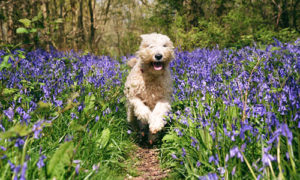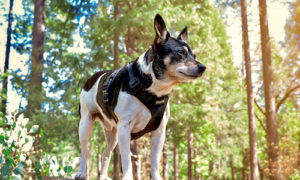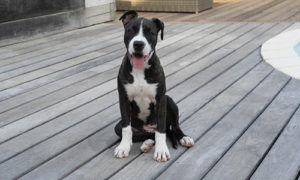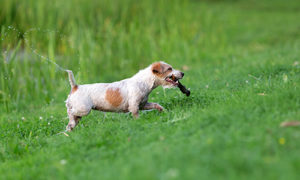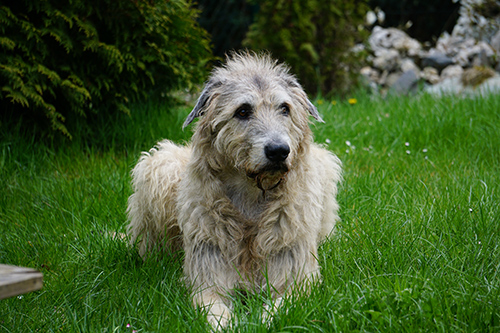
The Otterhound is an ancient breed developed from hunting French Griffons and Bloodhounds in the 12th century. These dogs were used for hunting otters because they preyed on fish. During the dog’s height in popularity in Britain, there were as many as 20 packs actively hunting during the second half of the 19th century. Otterhounds lost their purpose when hunting for otters was banned in England. Today, it is considered a vulnerable native breed. The hound is also listed as one of the rarest breeds. The dog’s population is estimated to be less than one thousand worldwide.
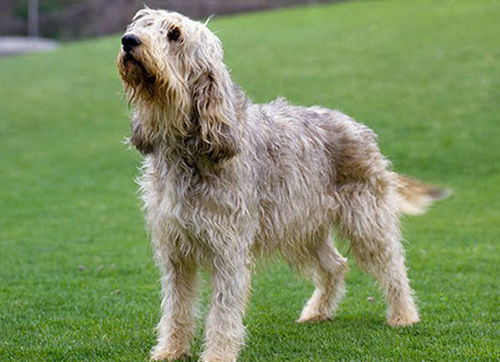
Breed Standard
Otterhounds are large, rough-coated, rugged dogs with good substance and strong bones. The breed is well-balanced with a level back, a deep chest, and a long, high-set tail covered with a fringe of hair and carried in saber fashion. Its compact, broad, webbed feet have arched toes and thick pads. The dog’s head is large and narrow, and the skull and muzzle are equal in length. The muzzle is square, with powerful jaws and a large, dark nose. The eyes are long and dark, pendulous ears are well covered with hair and hang close to the head. The dog’s large feet provide traction over slippery and rough terrain.
Breed Facts
| Energy level | Watchdog ability | ||
| Exercise requirements | Protection ability | ||
| Playfulness | Grooming requirements | ||
| Affection level | Cold tolerance | ||
| Friendliness toward dogs | Heat tolerance | ||
| Friendliness toward other pets | Friendliness toward strangers | ||
| Ease of training |
- Popularity: Very rare
- Family group: Scenthound
- Country of Origin: England
- Date developed: Ancient times
- Original purpose: Hunting otters
- Current function: Companion
- Other names: None
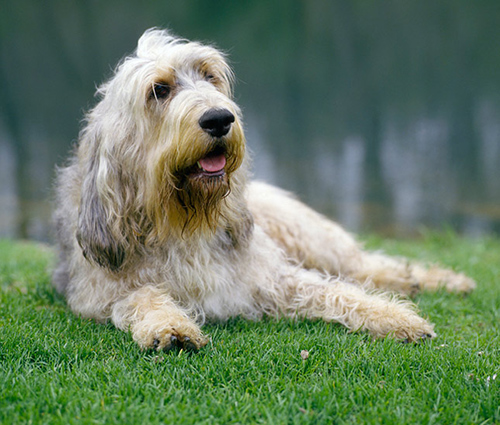
Activity level: High. This breed possesses the stamina to work all day and can be boisterous. They need to be exercised on a lead or in a fenced yard because they will roam and follow interesting scent trails and are natural escape artists. The dogs also enjoy jogging, hiking, long walks, and, thanks to their superb noses, they excel at tracking. The dog can withstand long strenuous hunts in harsh weather. The reasonably large muzzle and nose allow for ample room for olfactory receptors.
Grooming: A weekly brushing is required. However, coats with soft textures may need to be brushed 2 or 3 times per week. To limit the amount of dirt it brings into the home, trimming the feet is recommended. The facial furnishings and the beard may need frequent washing. Tidiness is not one of this breed’s virtues because the large, hairy feet tend to attract mud and debris, where the long hair around the mouth can hold food and water.
Coat: The dog’s rough double coat consists of an outer coat that is dense, crisp, coarse, water-resistant, woolly, short, and slightly oily.
Color: Any color or combination of colors.
Group: Hound
Year of recognition by the AKC: 1909
Otterhound Temperament
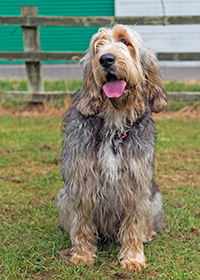
Thanks to their fine sense of humor and friendly nature, these dogs are beloved. Otterhounds can be stubborn even though their highly sociable and eager to please. The dogs can be determined and somewhat independent. Because of their size and strength, training is crucial. Training sessions should be upbeat and short. It is not a good guard dog, but they make excellent watchdogs with a melodic and deep voice. Otterhound breeders share that, in addition to baying, they also grunt, sigh, mutter, and groan.
Because it is a pack hound, the Otterhound is amiable with other dogs. However, as a hunter, it possesses an innate urge to follow the trails of mammals. The dog is highly determined, single-minded, and almost impossible to dissuade from its task once it begins to track. It is pretty good with children and affectionate with its family. Although the Otterhound was not traditionally kept as a pet, it is considered among the most responsive breeds. However, it is a subdued dog capable of functioning as a quiet canine companion.
Health
- Main concerns: CHD, gastric torsion
- Minor problems: elbow dysplasia, CTP
- Rarely seen: epilepsy, thrombopathy
- Recommended tests: hip, (elbow), DNA for thrombopathy
- Life span: 10 to 13 years
- Weight: male – 115 pounds; female – 80 pounds
- Height: male – 27 inches; female – 24 inches
Breeder and Buyer’s Advice
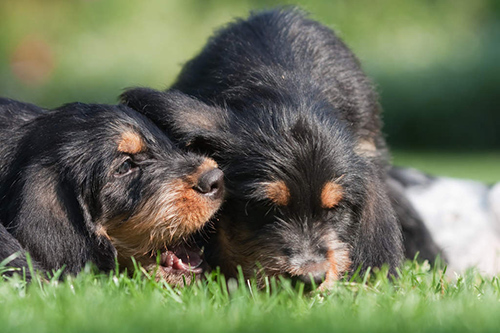
Only four to seven Otterhound litters are born in the United States each year. Visit the parent club’s website for a list of breeders, and check with Rescue or Breeder Referral to find someone in your area so you can meet Otterhounds before deciding on this breed. You can also go to Google or your favorite search engine and type in “Otterhounds near me,” and a list of breeders and locations will come up. Whenever Otterhounds are for sale, the price is contingent upon the breeder and the dog’s pedigree. A Miniature Otterhound is considered a hybrid or designer dog and will be harder to find.
Parent club: Otterhound Club of America (https://otterhound.org/); founded in 1960
Rescue: OHCA rescue information is located on the parent club’s website.

